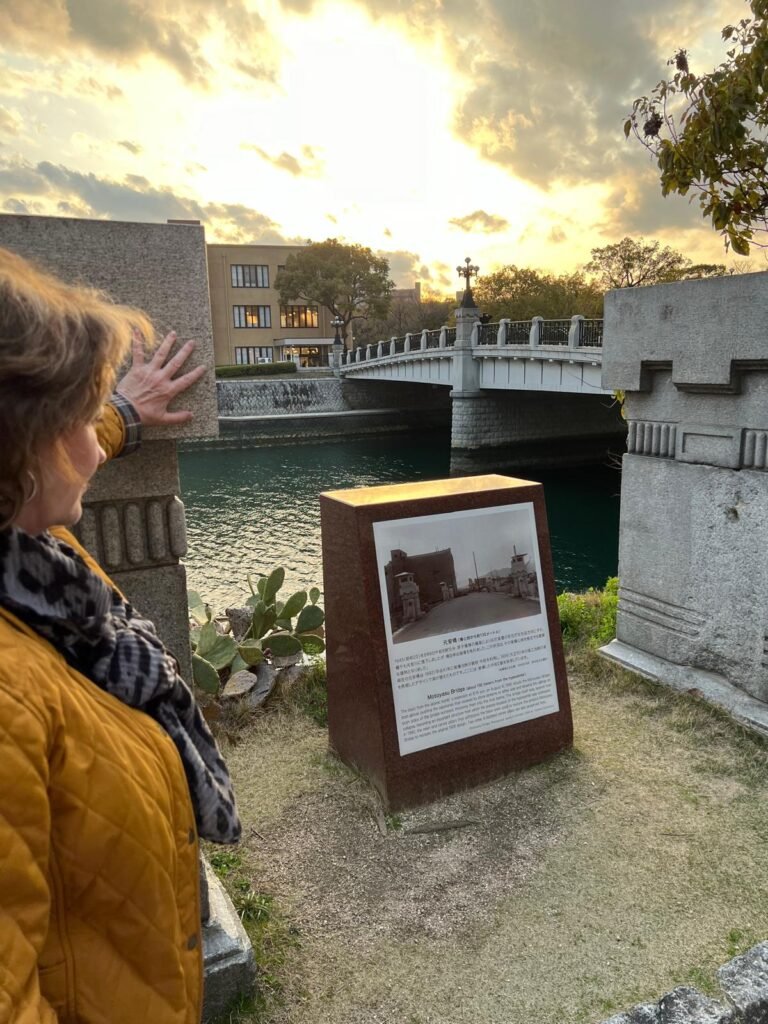Man’s inhumanity to man
Hiroshima, Japan
I AM STANDING on a quiet side street in Hiroshima, Japan. A small granite monument indicates what happened right here, 1800 feet above my head. On this very spot, on Monday, August 6, 1945 at 8:15 in the morning, the atomic bomb exploded precisely where I stand, devastating the city of Hiroshima, instantly killing 80,000 people, hundreds of thousands dying later. This plaque marks ground zero, the hypocenter.


I easily found the bridge that was the intended target of the bomb, left largely intact that morning, a random crosswind affecting the bomb drop. I place my hand on the original pillar of the bridge that still stands today, sentinel to a horror the world had never seen before or since. I take photos of the iconic bomb dome, a building that somehow remained standing when everything else was flattened in the blast.
I had to search for this marker indicating the precise location where the bomb detonated. The stone monument is not that large and is rather unassuming, especially considering what it commemorates. People ride by on bicycles, cars drive down the street. There is a parking garage next door. No tourists are here, just me.
I look up, thinking about the destruction that rained down on the people who lived here, people who were going about their day, eating breakfast, reading the newspaper, getting ready for work, getting kids ready for school. Just an ordinary day in an ordinary city. They had no idea what was about to happen to them, to their city, to the world. To our world.
Then the gates of hell opened wide.




